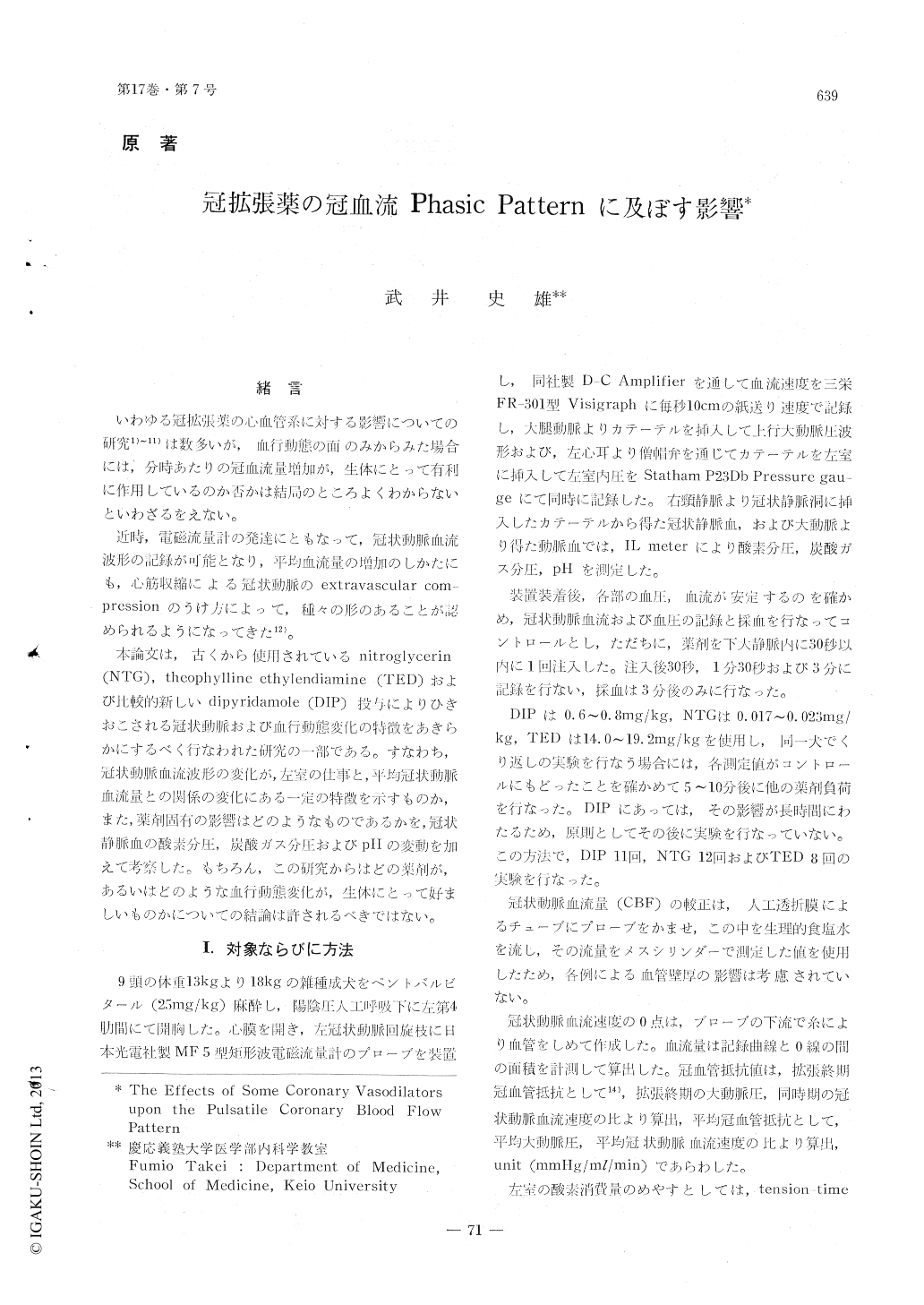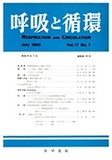Japanese
English
- 有料閲覧
- Abstract 文献概要
- 1ページ目 Look Inside
緒言
いわゆる冠拡張薬の心血管糸に対する影響についての研究1)〜11)は数多いが,血行動態の面のみからみた場合には,分時あたりの冠血流量増加が,生体にとって有利に作用しているのか否かは結局のところよくわからないといわざるをえない。
近時,電磁流量計の発達にともなって,冠状動脈血流波形の記録が可能となり,平均血流量の増加のしかたにも,心筋収縮による冠状動脈のextravascular com—pressionのうけ方によって,種々の形のあることが認められるようになってきた12)。
本論文は,古くから使用されているnitroglycerin(NTG), theophylline ethylendiamine (TED)および比較的新しいdipyridamole (DIP)投与によりひきおこされる冠状動脈および血行動態変化の特徴をあきらかにするべく行なわれた研究の一部である。すなわち,冠状動脈血流波形の変化が,左室の仕事と,平均冠状動脈血流量との関係の変化にある一定の特徴を示すものか,また,薬剤固有の影響はどのようなものであるかを,冠状静脈血の酸素分圧,炭酸ガス分圧およびpHの変動を加えて考察した。もちろん,この研究からはどの薬剤が,あるいはどのような血行動態変化が,生体にとって好ましいものかについての結論は許されるべきではない。
The effects of coronary vasodilators in-cluding dipyridamole (DIP), nitroglycerin (NTG), and theophylline ethylendiaminc (TED), on hemodynamics were studied in nine open-chest dogs.
A marked and continuous increase in co-ronary blood flow was caused by DIP accom-panied by a decrease in coronary vascular resistance and an increase in coronary sinus oxygen tension.
A decrease in tension-time index (TTI) induced three minutes after the injection of NTG was significant. An increase in heart rate was transiently found immediately after the injection of NTG.
Coronary vascular resistance and TTI were decreased immediately after the injection of TED, but after three minutes no significant changes were found.
Two types of the distribution of coronary blood flow recorded by electromagnetic flow-meter were observed during cardiac cycle. In one group, both of systolic and diastolic blood flow were increased, and in the other, only diastolic coronary blood flow was incr-eased.
In the former group, mean coronary vas-cular resistance was decreased, while in some of the latter group, mean coronary vascular resistance was unchanged.
From the view point of coronary vascular resistance (CVR), these were divided into three groups: group A, group B and group C.
In group A, mean CVR decreased and end-diastolic CVR increased or remained unchan-ged.
In group B, mean CVR increased or re-mained unchanged and end-diastolic CVR decreased.
In group C, both of mean CVR and end-diastolic CVR decreased.
Less case was found in group A. In group B, cases among NTG and TED group occu-pied majority.
Changes in CVR in group C were most frequently seen after injection of all three coronary vasodilators.
No particular changes in mean coronary blood flow, heart rate, mean aortic pressure and TTI could be found in group B.
However, in group C, an increase in mean coronary blood flow and heart rate and a decrease in mean aortic pressure were found.
Although DIP induced change in CVR of group C and increased coronary oxygen ten-sion, the other two which induced change in CVR of group C did not increase in coronary sinus oxygen tension.

Copyright © 1969, Igaku-Shoin Ltd. All rights reserved.


